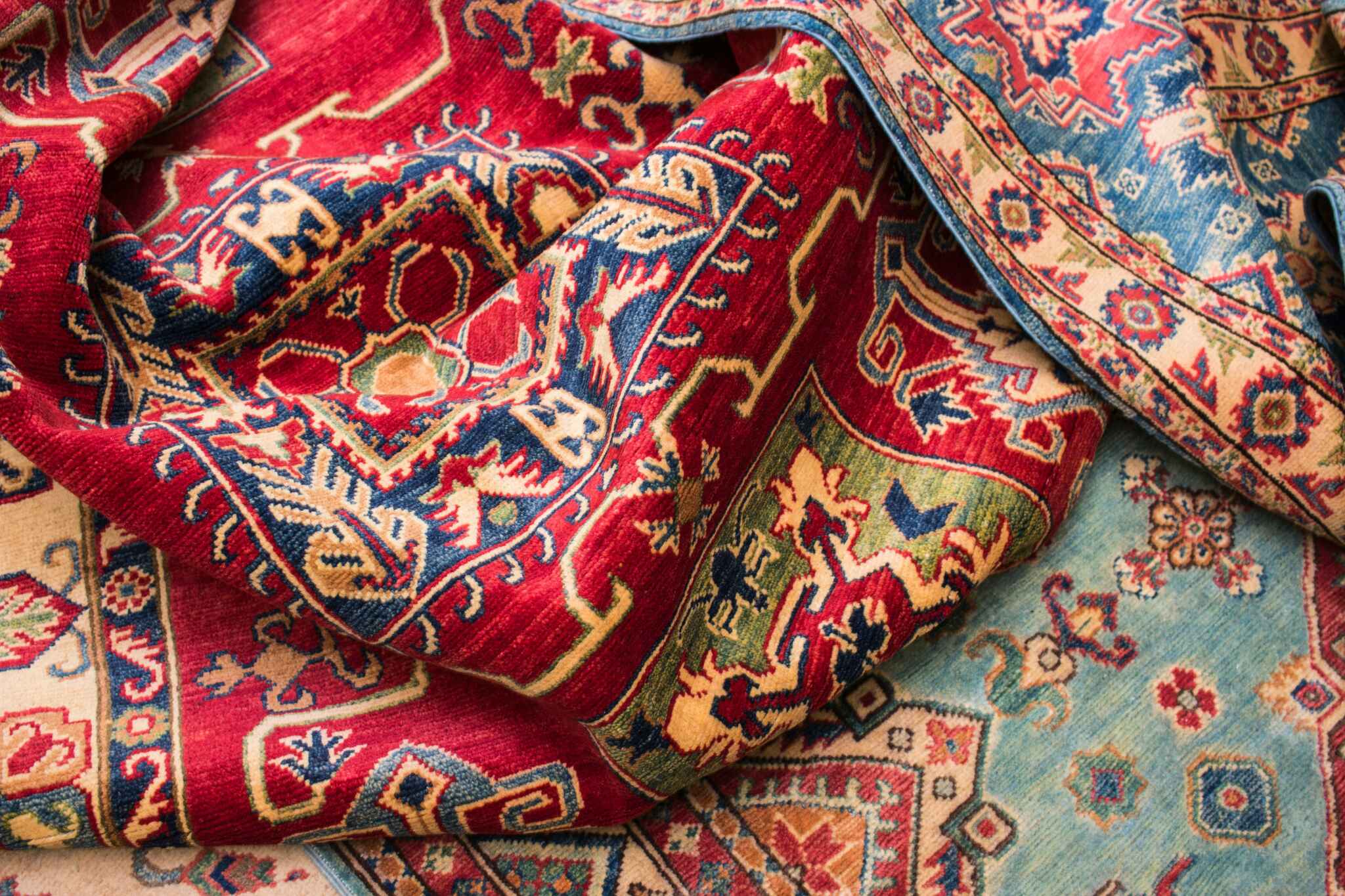Choosing a rug isn’t just about finding a design that complements your space—it’s about selecting a material that will hold up over time, retain its beauty, and offer real value. For centuries, wool has been the preferred choice for rugs, prized for its durability, vibrancy, and craftsmanship. However, in recent years, the market has been flooded with synthetic rugs made from materials like olefin (polypropylene), polyester, and acrylic.
At first glance, synthetic rugs may appear similar to wool, but the differences become clear once you live with them. While their low price tags may seem appealing, they often come at the expense of longevity, comfort, and overall quality.
Let’s take a closer look at these two categories and why the distinction between them is so important.
Wool Rugs: A Timeless Investment
Wool rugs are crafted using natural fibers sheared from sheep, spun into yarn, and woven into durable, beautiful textiles. These rugs have stood the test of time, with many antique wool rugs still in use today—something that cannot be said for synthetic alternatives. Whether hand-knotted, hand-tufted, or machine-made, wool rugs bring warmth, elegance, and craftsmanship to any space.
The Advantages of Wool Rugs
✔ Unmatched Durability – Wool is naturally elastic and resilient, allowing it to maintain its integrity for decades—even in high-traffic areas. Unlike synthetic rugs that flatten and wear out quickly, wool retains its luxurious feel over time.
✔ Vibrant, Long-Lasting Colors – Because wool absorbs dye so well, its colors remain rich and deep for years without fading or looking dull. Synthetic rugs, on the other hand, often lose their luster over time.
✔ Eco-Friendly & Sustainable – Wool is a renewable resource that grows back annually and is biodegradable. Unlike synthetic rugs, which contribute to landfill waste, wool rugs are an environmentally responsible choice.
Considerations for Wool Rugs
✘ Higher Initial Cost – Wool rugs are generally more expensive than synthetic rugs due to the quality of materials and craftsmanship. However, their longevity makes them a better investment in the long run.
Synthetic Rugs: The Disposable Alternative
Synthetic rugs are mass-produced using petroleum-based fibers like olefin, polyester, and acrylic. They are designed to mimic the look of natural fibers, but the resemblance stops there. Unlike wool, which has natural resilience, synthetic fibers are prone to matting, flattening, and degrading after just a few years of use.
While these rugs may seem appealing for their affordability, they often need to be replaced far sooner than expected, making them a less cost-effective option in the long run.
The One Real Advantage of Synthetic Rugs
✔ Lower Upfront Cost – Synthetic rugs are inexpensive because they are machine-made using cheap petroleum-based materials.
The Downsides of Synthetic Rugs
✘ Short Lifespan & Rapid Wear – Synthetic fibers are essentially plastic, meaning they do not have the resilience of wool. These rugs quickly lose their texture, flatten in high-traffic areas, and often need replacing after just a few years.
✘ Prone to Yellowing & Fading – Unlike wool, which maintains its rich colors, synthetic rugs often develop a dull, lifeless appearance over time. Exposure to sunlight and foot traffic accelerates this deterioration.
✘ Environmental Impact – Synthetic rugs are made from petroleum-based materials and do not break down easily. They often end up in landfills, contributing to environmental waste, while wool rugs biodegrade naturally.
Which Rug Should You Choose?
- If you value longevity, quality, and craftsmanship: A wool rug is the superior choice. It will last for decades, hold up beautifully, and provide warmth and comfort that synthetic rugs simply cannot match.
- If you need a short-term floor covering: A synthetic rug may serve as a temporary solution but be aware that it will likely wear out quickly, lose its appeal, and need to be replaced far sooner than a wool alternative.
For those seeking a high-quality rug at a reasonable price, second-hand wool rugs offer an excellent alternative. Many beautiful, well-made wool rugs are available at a fraction of their original cost due to home renovations or changing decor trends.
Final Thoughts
The difference between wool and synthetic rugs goes beyond just appearance—it’s about performance, longevity, and true value. Wool rugs are an investment that pay off over time, while synthetic rugs often prove to be a short-lived, disposable option. If you’re looking for a rug that enhances your home and stands the test of time, wool remains the gold standard. It may require a higher initial investment, but in the long run, it provides unparalleled beauty, durability, and sustainability.



